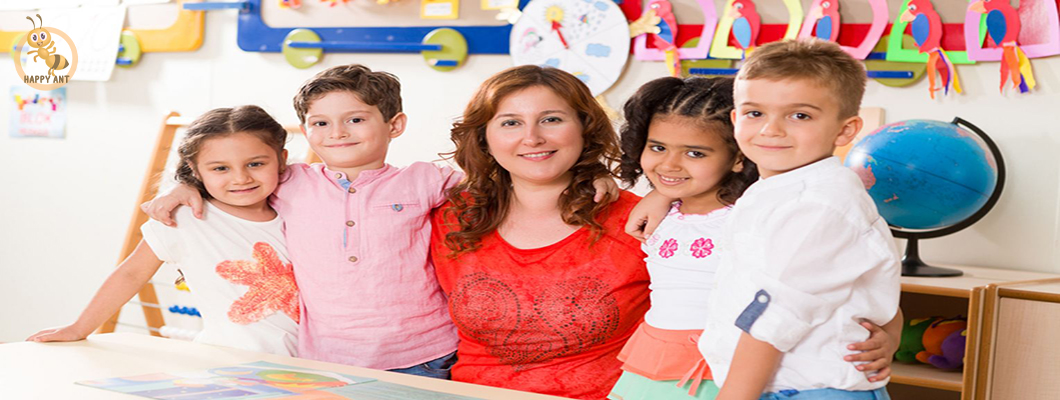
چگونه یک کودک دوزبانه تربیت کنیم؟
مزایای متعدد شناختی، تحصیلی و اجتماعی یادگیری زبانهای خارجی، والدین بسیاری را در سراسر جهان تشویق کرده است تا به دنبال نکاتی در مورد نحوه تربیت کودک دوزبانه باشند. اگرچه این تلاش به سادگی خواندن فلشکارتهای هپی انت یا امید به حفظ واژگان نیست اما به هرحال یادگیری کودکان خردسال بسیار راحتتر از بزرگسال است. برای استفاده از این زمان منحصر به فرد در زندگی، والدین دوزبانه باید تلاش آگاهانهای برای کمک به فرزندان خود در یادگیری انجام دهند. از آنجایی که خانوادهها و موقعیتهای زندگی متفاوت هستند هیچ رویکرد یکسانی وجود ندارد بنابراین در اینجا پنج روش مورد علاقه و کاربردی برای تربیت کودک دوزبانه را بیان میکنیم.
1. یک والد، یک زبان (OPOL)
برای خانوادههایی که هر یک از والدین به زبان متفاوتی مسلط هستند، رویکرد یک والد، یک زبان (که «یک نفر، یک زبان» یا OPOL نیز نامیده میشود) یک انتخاب مناسب است. همانطور که از نام آن پیداست، والدینی که OPOL را تمرین می کنند فقط به زبان مادری خود با فرزندانشان صحبت میکنند، چه در خانه و چه زمانی که بیرون از خانه هستند. به عنوان مثال، یک مادر فرانسوی، به زبان فرانسوی و یک پدر کوبایی به زبان اسپانیایی صحبت میکند. زمانی که خانواده در کشوری زندگی میکند که زبان مادری آن یکی از زبانهای آنهاست، (مثلاً اسپانیا) در این صورت آن زبان به زبان اکثریت تبدیل میشود و طبیعتاً کودکان به طور منظم از آن استفاده میکنند و تسلط بیشتری پیدا میکنند. برای اینکه کودک دوزبانه شود، مادر فرانسوی ما که در اسپانیا زندگی میکند باید بسیار مراقب باشد تا فرزندانش به اندازه کافی به زبان فرانسوی، معروف به زبان اقلیت، تمرین کنند. (بسیاری از کارشناسان می گویند حداقل 25 ساعت در هفته لازم است.) تهیه منابعی مانند کتاب و فیلم و تعامل منظم با سایر سخنرانان زبان اقلیت (از جمله اعضای خانواده، دوستان یا پرستار بچه) نیز کمک خواهد کرد. وبسایت هپی انت پیشنهاد می کند مقاله مربوط به نحوه برخورد والدین با کودک دوزبانه را نیز حتما مطالعه کنید.
2. زبان اقلیت در خانه
گزینه دیگر زبان اقلیت در خانه است. این تکنیک زمانی میتواند کاربرد داشته باشد که هر دو والدین در یکی از دو یا چند زبان مادری خود مسلط باشند. به عنوان مثال، یک مادر ایتالیایی فرزندان خود را در سیدنی با شوهر استرالیایی که اون نیز ایتالیایی صحبت میکند، بزرگ میکند. در این مورد، کل خانواده در خانه از زبان ایتالیایی استفاده میکنند و اگر یکی از والدین تسلط کامل به زبان اقلیت نداشته باشد، احساس راحتی در بین خانواده از بین برود و اشتباهات زبانی صورت می گیرد . این خانواده در خارج از منزل از انگلیسی استفاده میکنند. یعنی خارج از خانه به زبان اکثریت باید صحبت کنند. والدینی که موافقت میکنند در خانه از زبان غیر مادری خود استفاده کنند (پدر استرالیایی در مثال ما) ممکن است با این احساس دست و پنجه نرم کنند که به طور طبیعی با فرزندان خود مانند زبان مادری خود تعامل ندارد و نیز ممکن است کودکانی که هنوز به مدرسه نمیروند، تماس بیشتری با زبان اقلیت جامعه داشت باشند و در زمان شروع مدرسه، به دلیل ضعف در زبان اکثریت، کمی از همسالان خود عقبتر خواهند بود.
3. به کشور دیگری نقل مکان کنید
مهاجرت شغلی یکی از والدین ممکن است راه نجات زبان فرزندانشان باشد. در این حالت، خانوادهای که به یک کشور خارجی نقل مکان میکند در خانه به زبان مادری (یا زبان والدین) صحبت میکند، در حالی که بچهها زبان کشور مورد قبول خود را در مدرسه یا با دوستانشان یاد میگیرند و صحبت میکنند. مزیت بزرگ این رویکرد این است که کودکان از طریق یک سیستم مدرسه خارجی پیشرفت میکنند و عملاً تجربه تحصیل در خارج از کشور را قبل از رسیدن به سن دانشگاه به آنها میدهد. این کودکان (که گاهی اوقات "بچه های فرهنگ سوم" نامیده میشوند) هنگامی که بزرگ می شوند معمولاً ایده مهاجرت به خارج از کشور برای کار یا تحصیل را کمتر ترسناک میدانند.
4. بیشترین مواجهه با زبان
اگر مهاجرت به خارج از کشور امکان پذیر نیست والدین ممکن است به دنبال آموزشگاههای زبان خارجی در کشور خود باشند که در آن دانشآموزان تجربهای همه جانبه دارند و تمام کلاسهای آنها به زبان خارجی برگزار میشود. والدین ممکن است از چنین مدارسی برای تقویت کودک دوزبانه در زمانی که در خارج از کشور زندگی میکنند یا برای القای زبان دوم به فرزندان خود در کشور خود استفاده کنند. دورههای تحصیلی احتمالی در خارج از کشور علاوه بر آموزش فراگیر زبانهای خارجی، درهایی را برای تحصیل در دوره سوم و گزینههای شغلی بعدی باز میکند.
5. کلاسهای زبان در خارج از کشور
برای والدین تک زبانهای که امکان نقل مکان به خارج از کشور را ندارند، یافتن امکانی برای تعامل فرزندانشان به زبانی دیگر راهی آسان برای آشنا کردن آنها با یک زبان دیگر است. در حالی که کودکان اغلب مانند اسفنج عمل می کنند(از آن جهت که کودکان منعطفتر هستند و راحتتر چیزهای جدید را یاد میگیرند) مهم است به خاطر داشته باشید که اگرچه یادگیری زبانهای خارجی برای ذهنهای جوان بسیار آسانتر است ولی آنها هنوز به ساعتهای تمرینی فعال و متنوع به اندازه کافی نیاز دارند. با ثبتنام در کلاسهای زبان، کمپهای تابستانی و تجربههای تحصیل در خارج از کشور که مواجهه را به سطح جدیدی میبرد. از چندین زاویه به این چالش نگاه کنید یا پرستار بچه استخدام کنید که زبان مادری آن پرستار زبان هدف شماست. با گذراندن وقت با دوستانی که مسلط هستند و جستوجوی منابعی مانند فیلم و کتاب به آن زبان، تجربیات را تکمیل کنید.
اگرچه هیچ قانون جهانی برای تربیت کودک دوزبانه وجود ندارد اما مهمترین کاری که باید به عنوان والدین انجام دهید ارائه حمایتهای پرورشی است. رویکردی که در نهایت اتخاذ میکنید به ماهیت خانواده شما، منطقهای که در آن زندگی میکنید و منابعی که در دسترس شما هست بستگی دارد.
روش شما برای آموزش زبان دوم به فرزندتان چیست؟ در این راه با چه مشکلاتی رو به رو شدهاید. نظراتتان را با ما در میان بگذارید.




نوشتن نظر